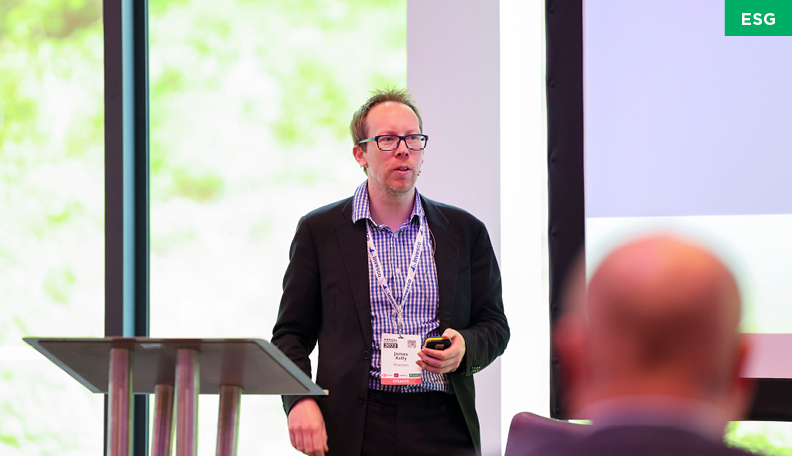
Mark Pegrum, co-head of corporate origination, LCM, EMEA at SMBC, said at an ACT conference that more than half of all transactions recently undertaken by the bank had some sort of sustainability-linked structure.
With that in mind, here are the best steps for building an ESG mindset when considering any financing, according to experts.
James Kelly (pictured), treasurer of publishing and education giant Pearson, says although there is plenty of expertise available for developing an ESG-focused financing strategy, key decisions must come from within.
“Realistically, it's going to be bespoke for every organisation, so no adviser is really going to be able to help you decide what your number one ESG target is. But for most organisations it's going to be relatively simple because they'll choose a specific target, such as reducing carbon emissions, and stick to it,” he says.
ESG-framed options, can offer better financing terms, if undertaken effectively, says Alex Smith, principal associate at law firm Eversheds Sutherland. “Banks that are being pressurised to increase their exposure to sustainable businesses may be able to offer better or more flexible terms to the right partners.”
Kelly says planning is key to ensuring organisations can deliver on expectations. For its sustainable revolving credit facility (RCF), taken out in 2019, Pearson is required to meet a loan metric of increasing vocational education learners every year, or face a penalty.
“Banks want a loan metric to be sufficiently stretching, so we planned for a year or so before each of our social bond and the RCF to make sure that we had the right metrics,” says Kelly.
Producing high-quality data can be vital for effective execution of an ESG-linked financing, says Kelly. He was able to draw on support from Pearson CFO Sally Johnson who seconded another finance director to the sustainability team “because it was it was quite challenging to manage all of the different spinning plates”, he adds.
Smith says it is important to know if you have the right level of ESG expertise on board. “Do you have someone who has a particular job role in terms of ESG, or will you need to bring in someone else with a track record of working with clients who don't have a particularly developed ESG function?
“Banks often have client-facing teams who can help you through, building a sustainability framework, with KPIs (key performance indicators) and SBTs (science-based targets) to sit alongside your financing product. A mix of resources that are in-house or third parties may depend on how complex the product is that you're looking to get in place,” says Smith.
There is no point in a treasurer trying to undertake ESG-linked financing, if it doesn’t align with the organisation’s profile and values, says Kelly. “You can't really fake it. You can't work in an organisation that ignores ESG 99% of the time, and then roll out an ESG loan or an ESG bond because there will be too many questions and people will see through it,” he says.
“Make sure your certificate provider is one that's trusted, and that you're also liaising correctly with your legal counsel to make sure that it's all documented correctly. That's to make sure that you avoid any accusations of greenwashing, social washing or sustainability washing,” says Smith.
Lawrie Holmes is a freelance business and finance journalist
